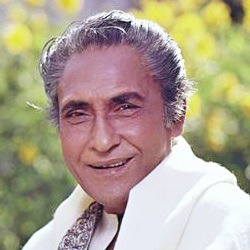
One would be at a loss, wondering where to start when writing about a film legend like AshokKumar. After all, he is considered to be one of Indian film industry’s greatest actors, who has performed as the romantic hero, antagonist as well as in various other shades of character roles with equal aplomb. AshokKumar really was witness to a very important evolutionary phase of the Indian film industry, and has spread across generations his genius as an actor. From very unpretentious beginnings, having been born as Kumudlal Ganguly in a Bengali family living outside Bengal, he seemed destined to take up a legal profession, having completed his law course from the prestigious Presidency College of Kolkata. But his heart was in the world of cinema, but strangely he did not want to be an actor, but thought of becoming a technician. He probably got interested in this line after hearing about film making techniques from his brother in law
Sashadhar Mukherjee
Bio coming soon... >> Read More...
 , who at that time was one of the big shots of the then famous production house,
Bombay Talkies
Click to look into! >> Read More...
, who at that time was one of the big shots of the then famous production house,
Bombay Talkies
Click to look into! >> Read More...
 . It is he who made it possible for young Kumud to start working there as a laboratory assistant from the mid 1930s.
. It is he who made it possible for young Kumud to start working there as a laboratory assistant from the mid 1930s.
 , who also was the wife of
Himanshu Rai
Born in Cuttack, Orissa, in the year 1892, Himansh >> Read More...
, who also was the wife of
Himanshu Rai
Born in Cuttack, Orissa, in the year 1892, Himansh >> Read More...
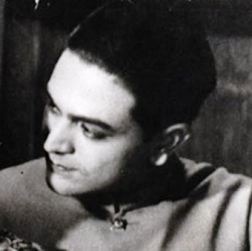 , the director. More out of spite than any acting traits, Rai put Kumud in the lead role, re-christening him AshokKumar. The rest, as they say is history, with AshokKumar starring in a series of 10 films with leading lady Devika Rani for the remaining of the 1930s decade, with almost all of them becoming remarkable hits, making this screen pair one of the most popular ones of all times. Besides “Jeevan Naiya”, the more famous ones where they appeared were “Achhut Kanya” which immediately followed their first film and “
Nirmala
Famous director Gulzar had adapted the story of Mu >> Read More...
, the director. More out of spite than any acting traits, Rai put Kumud in the lead role, re-christening him AshokKumar. The rest, as they say is history, with AshokKumar starring in a series of 10 films with leading lady Devika Rani for the remaining of the 1930s decade, with almost all of them becoming remarkable hits, making this screen pair one of the most popular ones of all times. Besides “Jeevan Naiya”, the more famous ones where they appeared were “Achhut Kanya” which immediately followed their first film and “
Nirmala
Famous director Gulzar had adapted the story of Mu >> Read More...
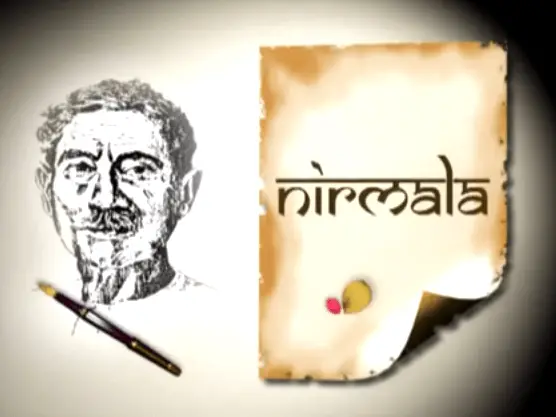 ” in 1938.
” in 1938.  ” and “
Azad
Click to look into! >> Read More...
” and “
Azad
Click to look into! >> Read More...
 ” both in 1940, starring with
Leela Chitnis
Leela Chitnis was an Indian actress, who is known >> Read More...
” both in 1940, starring with
Leela Chitnis
Leela Chitnis was an Indian actress, who is known >> Read More...
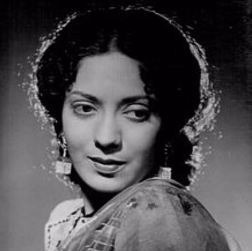 another leading lady of those days. But it was the 1943 movie “Kismet” which really broke all records at the box office, achieving the distinction of becoming the first Hindi movie to gross 1 crore. AshokKumar had established himself not only as most bankable leading actor of the period, but also through his “anti-hero” role in the film, demonstrated his versatility as an actor. The 1950s era, however, saw AshokKumar moving mostly into mature character roles, leaving the romantic hero’s slot to the trio of
Dilip Kumar
Muhammad Yusuf Khan was born on the 11th of Decemb >> Read More...
another leading lady of those days. But it was the 1943 movie “Kismet” which really broke all records at the box office, achieving the distinction of becoming the first Hindi movie to gross 1 crore. AshokKumar had established himself not only as most bankable leading actor of the period, but also through his “anti-hero” role in the film, demonstrated his versatility as an actor. The 1950s era, however, saw AshokKumar moving mostly into mature character roles, leaving the romantic hero’s slot to the trio of
Dilip Kumar
Muhammad Yusuf Khan was born on the 11th of Decemb >> Read More...
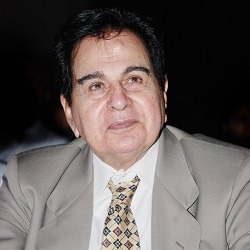 ,
Raj Kapoor
Rajkapoor is a film maker and movie director from >> Read More...
,
Raj Kapoor
Rajkapoor is a film maker and movie director from >> Read More...
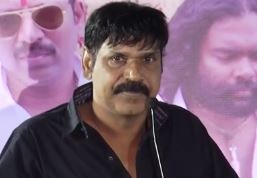 and
Dev Anand
Dev Anand would be nostalgically remembered by fil >> Read More...
and
Dev Anand
Dev Anand would be nostalgically remembered by fil >> Read More...
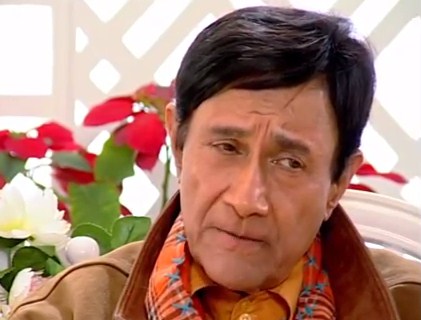 . Passing into the 1960s, he continued playing roles matching his age, shuttling between the roles of a judge in “
Kanoon
Kanoon is a show based on the court-room drama ser >> Read More...
. Passing into the 1960s, he continued playing roles matching his age, shuttling between the roles of a judge in “
Kanoon
Kanoon is a show based on the court-room drama ser >> Read More...
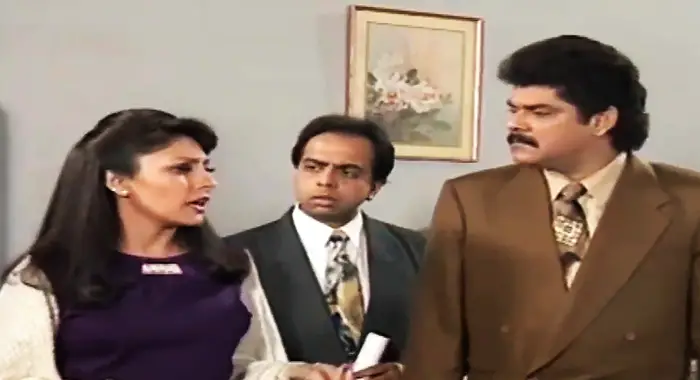 ”, a freedom fighter in “
Bandini
Bandini is a family drama that aired on NDTV Imagi >> Read More...
”, a freedom fighter in “
Bandini
Bandini is a family drama that aired on NDTV Imagi >> Read More...
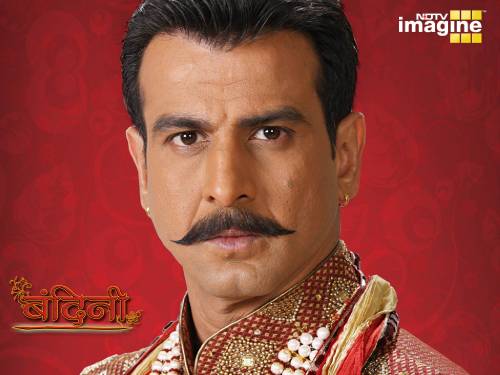 ” and that of a vicious zamindar in “Jawaab”. The notable films of his later years were the period film “Pakeezah” in 1972; the
Manoj Kumar
Manoj Kumar, aka Manoharan, was born on September >> Read More...
” and that of a vicious zamindar in “Jawaab”. The notable films of his later years were the period film “Pakeezah” in 1972; the
Manoj Kumar
Manoj Kumar, aka Manoharan, was born on September >> Read More...
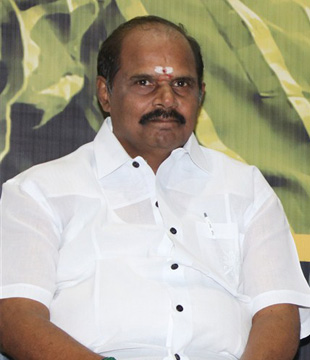 movie “Purab Aur Paschim” in 1970; the family comedy “Khoobsoorat” in 1980 and the adult comedy “Shaukeen” in 1982.
movie “Purab Aur Paschim” in 1970; the family comedy “Khoobsoorat” in 1980 and the adult comedy “Shaukeen” in 1982.  , he too had started as a singing star, but gave up after a few films. Besides being the eldest of the Ganguly clan, he was widely regarded and loved in the industry for his amiable manners and humility, being referred to as Dadamoni (loving elder brother in Bengali). With his death in 2001, the industry really lost one of its steady stars who had spanned it for over 60 years.
, he too had started as a singing star, but gave up after a few films. Besides being the eldest of the Ganguly clan, he was widely regarded and loved in the industry for his amiable manners and humility, being referred to as Dadamoni (loving elder brother in Bengali). With his death in 2001, the industry really lost one of its steady stars who had spanned it for over 60 years. LATEST NEWS
WEB STORIES
LATEST SERIALS & SHOWS
LATEST WEB SERIES
LATEST PHOTOS
ACTRESS PHOTOS
LATEST ARTICLES
OTHER MOVIE ACTORS
BORN TODAY